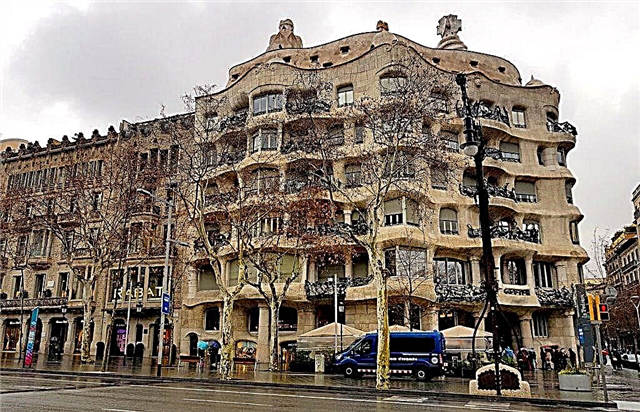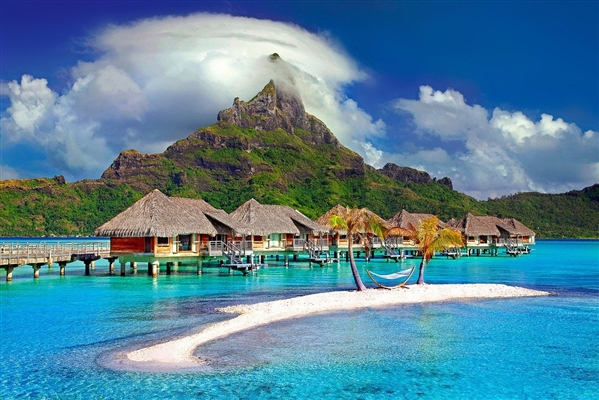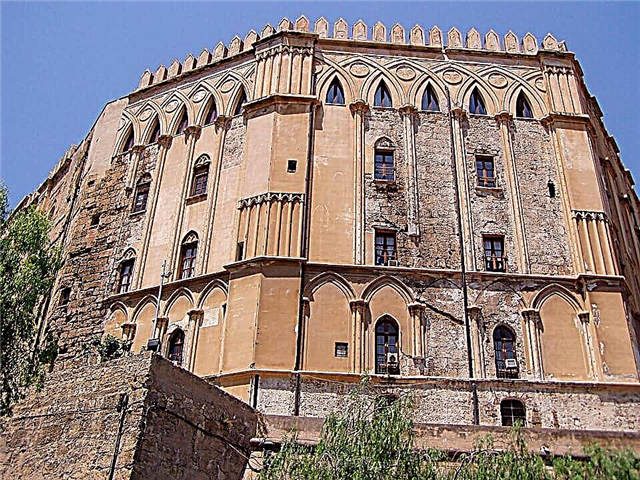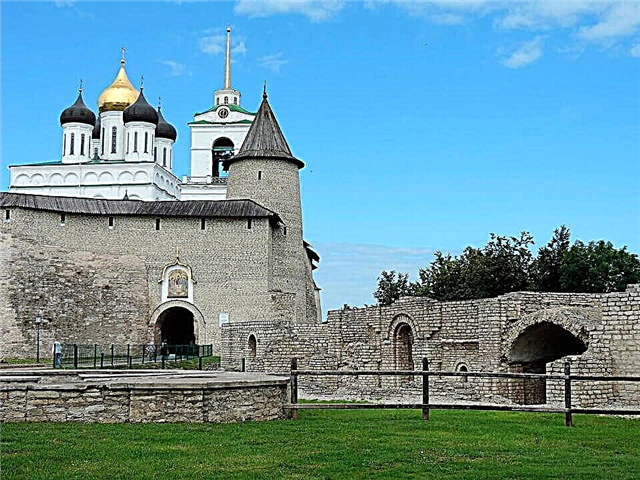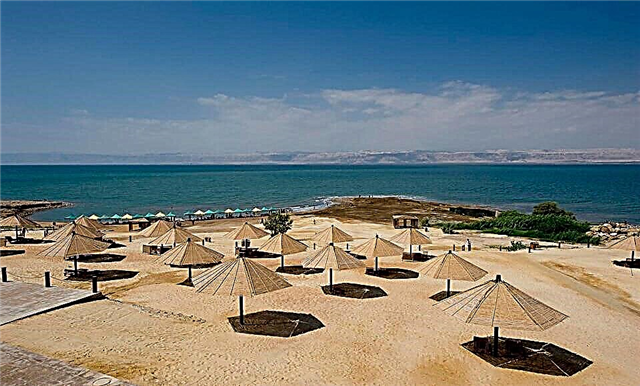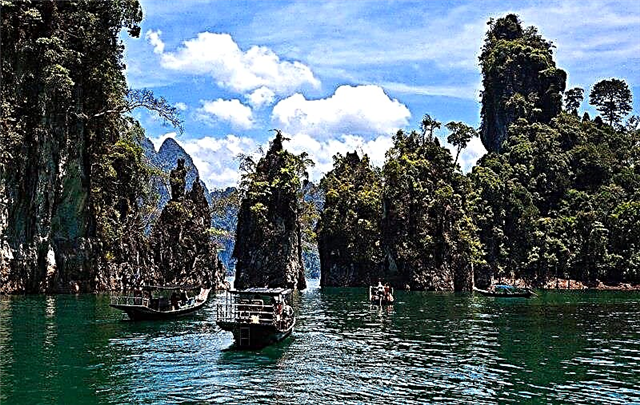Address: Moscow, st. Trade union, 123
opening date April 10, 1981
Coordinates: 55 ° 49'22.0 "N 37 ° 38'23.2" E
Content:
An unusual museum complex near the territory of VDNKh has been receiving visitors since the early 1980s. This is the first national museum dedicated to space and people who made outer space accessible to earthlings. The museum is filled with interactive exhibits, so traveling through its halls turns into a real adventure.

View of the Museum of Cosmonautics and the Monument to the Conquerors of Space
Museum history
The first exhibits for the future museum began to be collected soon after the flight of Yuri Gagarin. One of the founders of domestic rocketry, Sergei Korolev, really wanted as many people as possible to get acquainted with the achievements of domestic and foreign astronautics. It was he who proposed to create a space museum in the capital. The location for the building was the Cosmonauts Alley, located not far from the central entrance to the Exhibition of Achievements of the National Economy.
Museum halls began to be built at a depth of 5 m - under the basement of the monument, which was erected in honor of the conquerors of outer space. The premises were decorated with colored stained-glass windows, sculptures and decorative panels. In 1981, 20 years after the first manned flight into space, the Astronautics Museum received its first visitors.

Museum entrance
A quarter of a century later, the monument itself and the museum expositions were badly dilapidated and technically outdated, so the city authorities began their large-scale reconstruction. The exhibition space was quadrupled with the addition of interactive components and simulators. The construction work took several years and was completed in 2009.
Today the museum dedicated to space occupies an area of 8.4 thousand square meters. m. Almost 100 thousand exhibits are kept here, and this is one of the largest museum collections in Moscow for children.
What can be seen in the museum
The exposition of one of the most famous museums in Moscow is divided into nine thematic sections and presented in eight halls. All rooms are very nicely decorated. On the ceiling you can see an image of the planets of the solar system and a detailed map of the starry sky. The walls are decorated with constellations made in the form of decorative plaster bas-reliefs.

In the museum of cosmonautics
The first hall, which the visitors enter, is dedicated to the history of the universe. Other halls of the museum acquaint tourists with scientists and designers who created spacecraft, the history of the first flights outside the Earth's atmosphere and international cooperation in space. They display samples of equipment, stations, rockets and spacesuits. It houses the personal belongings of astronauts, rare photographs, old books, paintings, coins, medals, posters, postcards, postage stamps and "space" souvenirs.
The kids love the new part of the museum, which is completely copied from the Mission Control Center. Large screens show how the ISS moves in orbit around the planet. In addition, in the museum MCC there are live broadcasts from the station, during which the cosmonauts get in touch with the Earth.

Stuffed dogs Belka and Strelka
The most interesting exhibits
All children are attracted by the stuffed Belka and Strelka - the first dogs that have been in space even before the human flight. Between the dogs is a genuine ejection container, in which the animals returned safely to Earth. And next to it is a special dog suit with lacing.
In the hall "Creators of the Space Age" there is an installation of SP Korolyov's office and a military uniform of a designer. The wooden veranda of the house in Kaluga, where K.E. Tsiolkovsky lived, is also exhibited here. In the memorial hall you can see things that belonged to the founder of the study of jet propulsion, Friedrich Arturovich Zander. This is a typewriter, weights, scales and a rocket engine, created by a scientist at the beginning of the last century.

Hall "Space House in Orbit". At the top, the base unit of the Mir orbital complex
The museum exhibits several exact copies of valuable technical devices. Adults and children are attracted by a large metal ball - the first artificial satellite launched into low-earth orbit in 1957. Not far from him are the orange spacesuit in which Gagarin flew, and the spacesuit for spacewalk, first used by cosmonaut Leonid Leonov.
The museum halls contain copies of the descent vehicles that have visited Venus and Mars. Some visitors pause to get a better look at the rocket engine and the Soyuz spacecraft docking assembly.
One of the sections of the exposition tells about the study of the lunar surface. In this part of the museum there is a model of the self-propelled vehicle "Lunokhod-1", made on a scale of 1: 1. He is notable for having worked on the moon for over 300 days. Here you can also see a model of the automatic Luna stations, at one of which valuable lunar soil was delivered to our planet.

It is interesting to get acquainted with the daily life of astronauts in orbit. The museum houses a dental kit that can be used to treat teeth in zero gravity, as well as an on-board refrigerator for vegetables and fruits.
What is the difference between the Proton and Saturn launch vehicles? What is the Space Shuttle Launch Complex like? To answer these questions, it is worth looking into the hall with your child, where there are precisely executed models of Russian, American and Chinese missiles.
Educational programs and excursions
For the students of the capital's schools, the museum conducts unusual lessons of the surrounding world, physics and English, to which children come together with their teacher. In addition, the museum allows school educators to use the exhibition space and exhibits for free classes with students.

Airlock compartment of the orbital station "Mir"
To make it interesting for young guests of the museum to get acquainted with the work of astronauts and space exploration, interactive excursions are conducted for them. Preschoolers travel around “Space for Kids” and learn “How Plutoshka the Dog Prepared for Flight”. Primary school students answer the questions of the quiz "Kosmotrek" and go on an excursion "Living Planet". For secondary and high school students, there are thematic excursions dedicated to simulators for cosmonauts and the work of the ISS.
Children who are interested in technology and love to design are invited to classes at the Museum's Engineering Center. This is the place where everyone is taught the basics of computer programming, engineering and modeling.

Copy of the Mission Control Center
Cinema hall
The new cinema hall resembles the cockpit of a fantastic starship. The soft armchairs can accommodate almost 100 people. People come here to listen to lectures, meet with astronauts and watch presentations on new space exploration. The cinema also shows feature films and documentaries about space and holds concerts.
Cafe
There is a cafe on the 2nd floor. Here you can have a snack and feed your child with a full meal. The local chefs also bake excellent cakes, space burgers and space burgers. In an unusual cafe, they sell food that is made to feed the participants in flights to the ISS. Space food is made from quality raw materials and does not contain thickeners or stabilizers. When parents buy hermetically sealed tubes of meat puree, borscht and meat with buckwheat, none of the children complains about their appetite!

The first artificial Earth satellite
Useful information for visitors
The doors of the museum are open on Tuesday, Wednesday, Friday and Sunday from 10.00 to 19.00, and on Thursdays and Saturdays from 10.00 to 21.00. Ticket sales end half an hour before closing time. Preschoolers are admitted to the museum free of charge.The entrance ticket for children from 7 to 18 years old and full-time students costs 100 rubles, and for pensioners - 50 rubles.
The museum has a barrier-free environment, so visitors in wheelchairs, blind and visually impaired tourists can freely move around its halls. Inside the building there is free wi-fi, a library and a gift shop selling original gifts and educational games for children. In addition, the store sells space icons, meteorites, fossils, gift pads, photo albums and monographs about space.

Rocket engine RD-214
How to get there
The museum is located at 111 Prospekt Mira, within walking distance from the VDNKh metro station and the Exhibition Center monorail station. Several Moscow buses and trams stop near the museum.


